Hostas have long been the unsung heroes of shady gardens. Their lush, broad leaves and varying shades of green, blue, and gold make them perfect for adding texture and life where sunlight fears to tread.
If you’re looking to elevate your landscaping game with plants that don’t demand relentless sunshine but still deliver stunning presence, Hosta are your go-to pals.
Why Choose Hosta? The Quiet Power of Shade Gardening
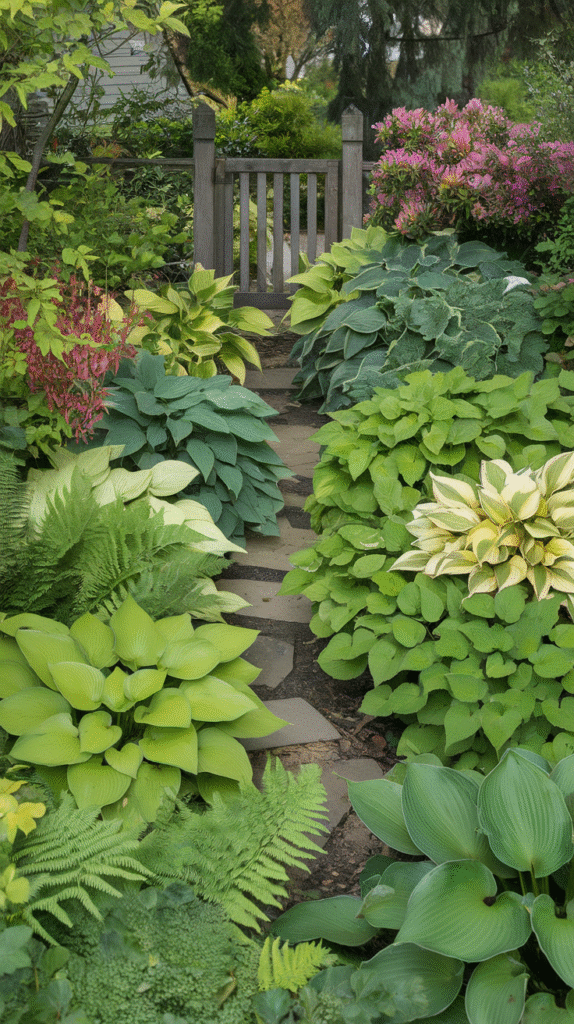
Let’s start by acknowledging the magic of hosta. They’re the dependable understudies in the plant world, thriving in shady spots where many others wilt or disappear. This shade tolerance is one of their greatest strengths.
But it’s not just about survival — hosta bring elegant foliage patterns, colors ranging from icy blues to chartreuse yellows, and even charming flowers that sway gently in the breeze. They’re low-maintenance, deer-resistant (usually), and can be planted en masse or in mixed borders for dramatic effect.
I remember when I first discovered hostas in my grandmother’s garden. She called them “the backbone of any shady corner,” and watching those big, glossy leaves unfurl every spring was like seeing a soft green blanket settle over the earth. If you want a garden that feels both calm and alive, hostas are your perfect foundation.
1. Create a Lush Shade Border Using Mixed Hosta

One of the most classic ways to use hostas is by creating a mixed shade border. Combine different varieties with varying leaf shapes, sizes, and colors to form a dynamic, textured edge along pathways, fences, or walls.
For example, pair the large, heart-shaped leaves of ‘Sum and Substance’ with the smaller, blue-green foliage of ‘Blue Mouse Ears’ for contrast.
Layering hostas in this way creates depth and keeps your garden interesting throughout the growing season. Remember to plant taller hostas at the back and smaller ones in front, creating a natural flow like a well-curated bookshelf where each plant has its spotlight.
2. Use Hosta as Ground Cover Under Trees
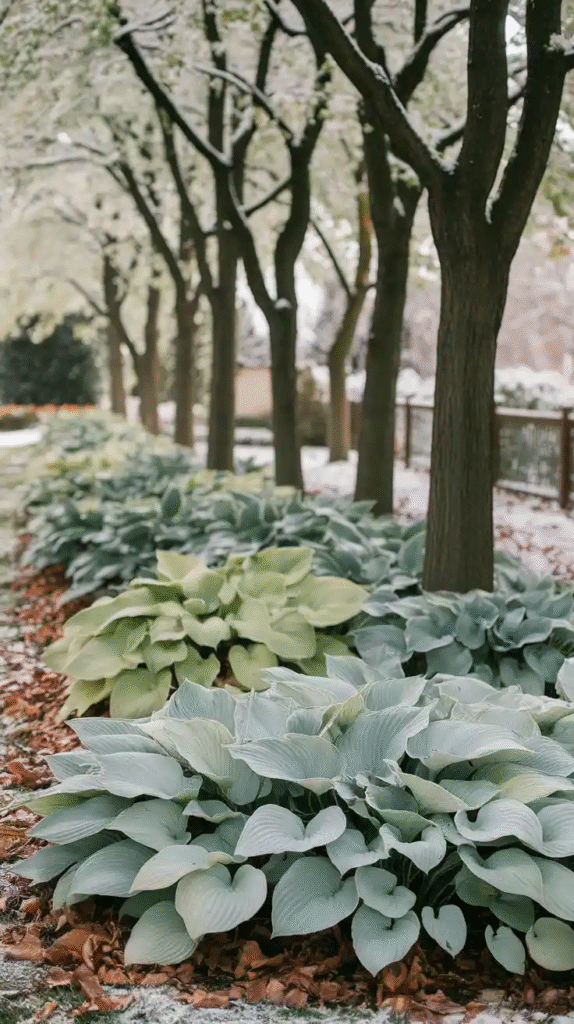
Trees often cast a dense shade, leaving their roots exposed and soil bare. Hostas are perfect for ground cover beneath trees, providing lush greenery while protecting the soil from erosion. Their broad leaves help retain moisture and suppress weeds, creating a neat, healthy carpet.
Planting hostas under a maple or oak transforms a dull area into a thriving woodland scene. Just be mindful to avoid compacting the soil too much during planting, so those roots can breathe and your hostas can flourish.
3. Combine Hosta with Ferns for a Woodland Feel
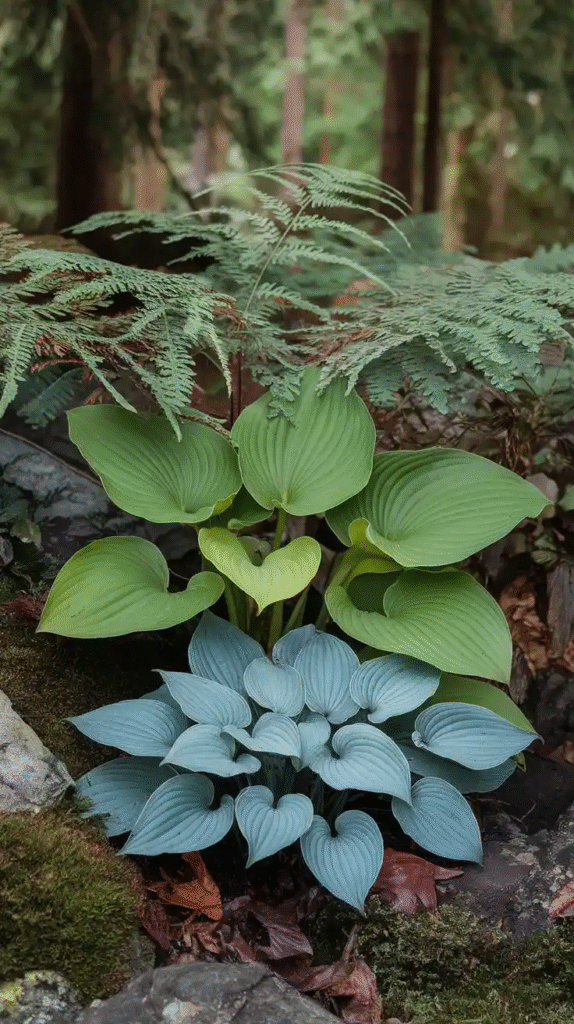
If you want to evoke the magic of a forest floor, pair hostas with shade-loving ferns. The feathery, delicate fronds of ferns contrast beautifully with the broad, smooth leaves of hostas, creating an enchanting texture mix.
I once designed a small backyard retreat with a client who loved woodland vibes, and mixing ‘Autumn Frost’ hostas with lady ferns gave the space a serene, almost mystical quality. This combo thrives in moist, shaded areas, so ensure you keep the soil consistently damp but not waterlogged.
4. Plant Hosta Along Walkways for a Welcoming Path
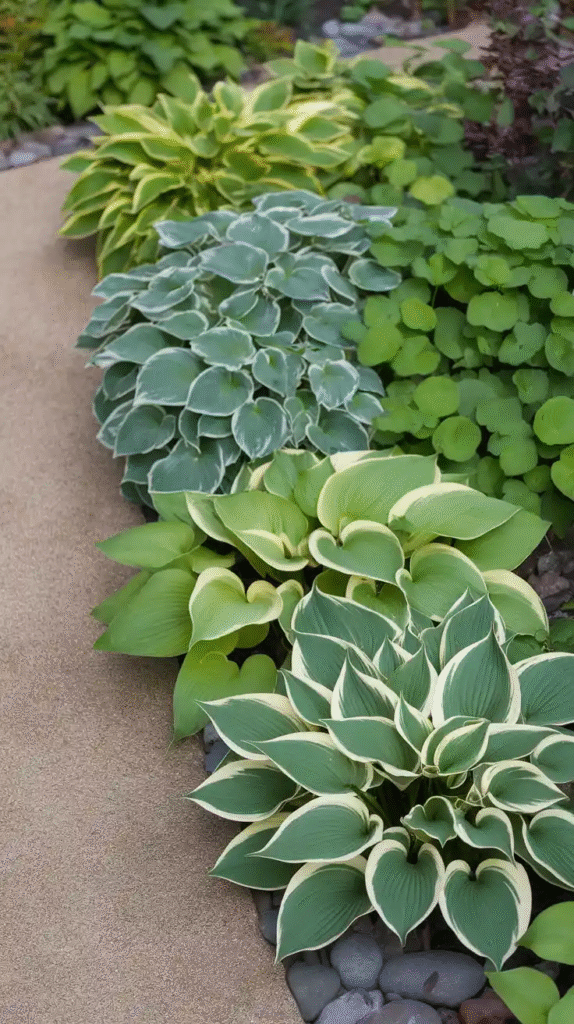
Hostas make an inviting natural border along garden paths and walkways. Their neat, clumping habit and bold leaves guide visitors while softening hard edges like stone or brick.
For a cheerful touch, include varieties with variegated leaves, such as ‘Patriot’ or ‘Francee,’ which brighten shady paths with their creamy edges. The sight of a winding path lined with hostas feels like a whispered invitation to slow down and explore.
5. Use Hosta in Containers for Versatile Garden Accents
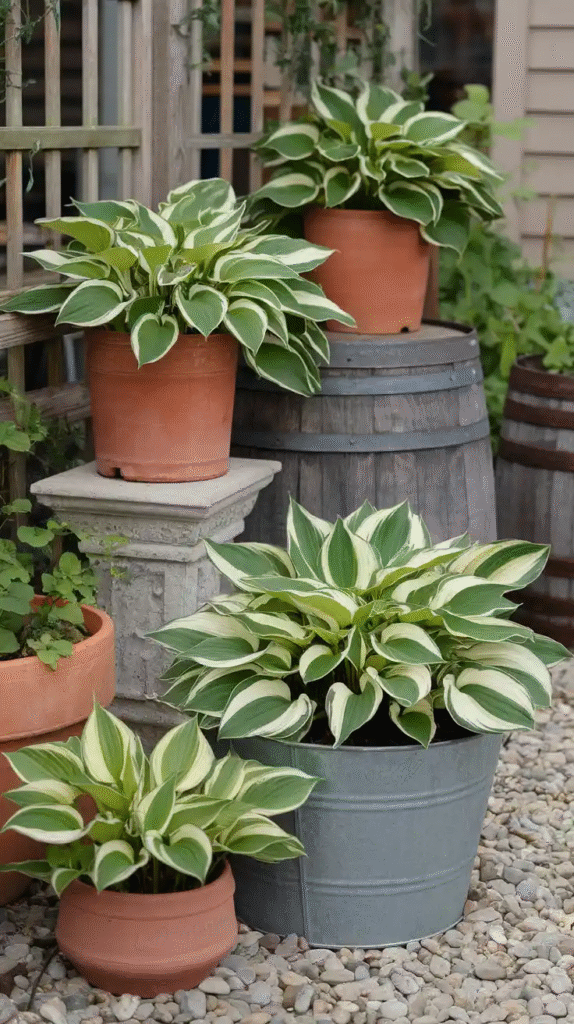
Hostas are surprisingly versatile when planted in containers, making them ideal for patios, decks, or entryways. Large containers filled with a single dramatic hosta like ‘Guacamole’ create focal points bursting with color and texture.
Containers also let you control soil quality and moisture better, which is a plus since hostas appreciate rich, well-drained soil. Just remember to water more frequently during hot spells, as pots dry out faster than garden beds.
6. Mix Hosta with Spring Bulbs for Seasonal Interest
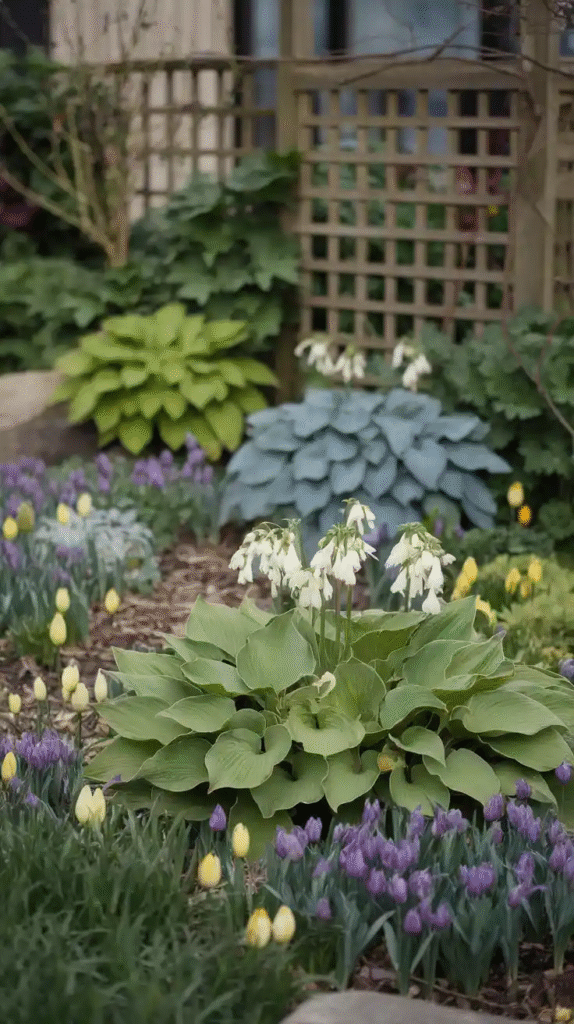
While hostas emerge later in spring, combining them with early bloomers like daffodils or tulips adds layers of seasonal interest. Plant bulbs beneath hostas in the fall, so when the hosta leaves begin to emerge, the bulbs are already fading, avoiding visual competition.
This layering is like a carefully choreographed dance — daffodils lead with a splash of color, then gracefully exit as hostas take center stage with their leafy presence.
7. Create a Focal Point with a Giant Hosta Variety
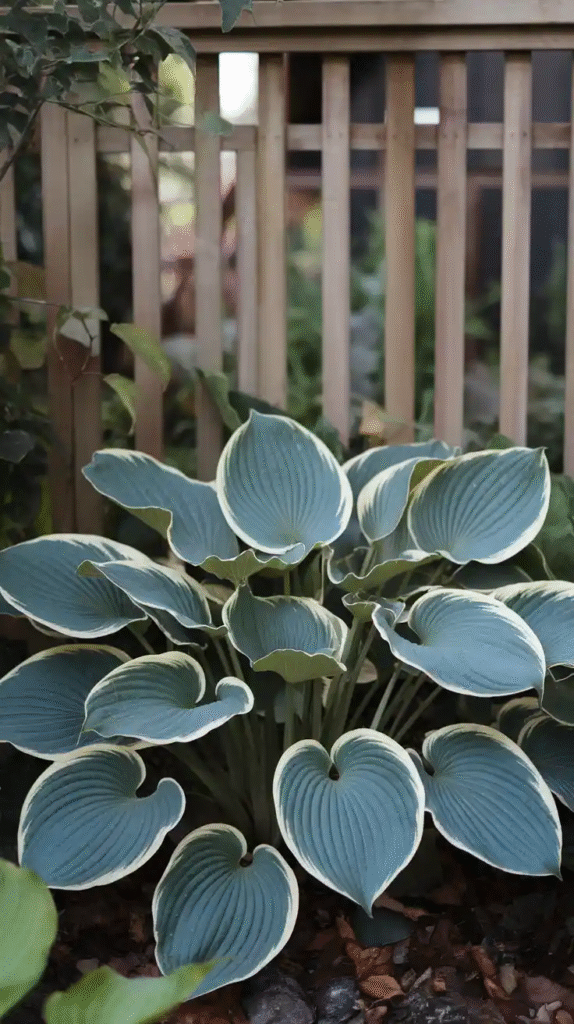
Sometimes, size matters. Giant hostas like ‘Empress Wu’ can serve as an eye-catching focal point in your shade garden. Their massive leaves create drama and draw the eye.
Planting a giant hosta near a bench or garden sculpture can anchor the space, giving it a grounded, substantial feel. I recall planting an ‘Empress Wu’ beside a rustic wooden bench in a client’s garden; it instantly made the area feel like a secret hideaway.
8. Use Variegated Hosta to Brighten Dark Corners
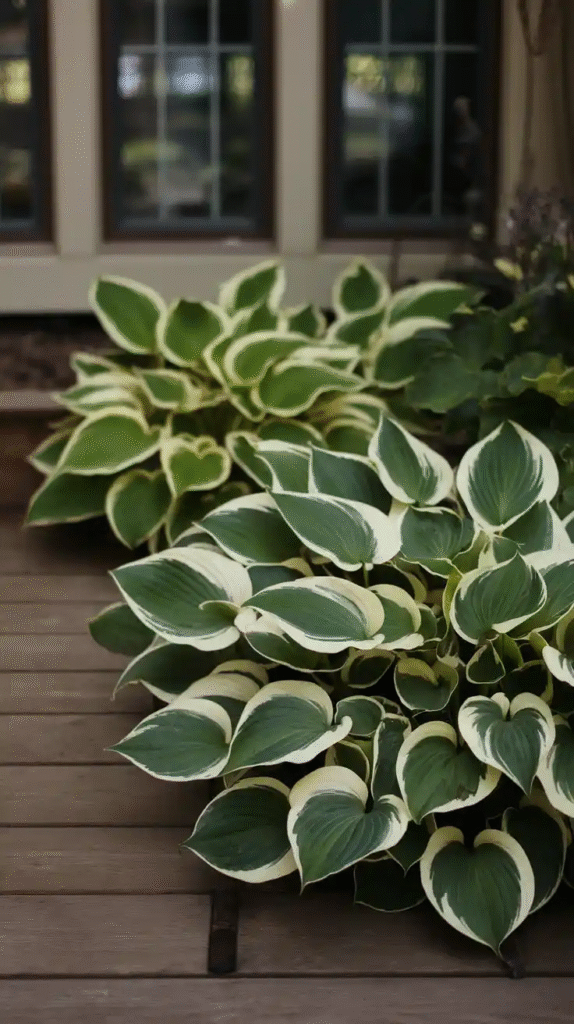
If you have a particularly dark, gloomy corner, variegated hostas are your brightness warriors. Varieties like ‘Golden Tiara’ or ‘Patriot’ have creamy or yellow margins that reflect light and add contrast.
Placing these in shaded areas lifts the visual weight and prevents your garden from feeling too heavy or dull. They’re like the sparkling accents on a velvet dress — subtle but essential.
9. Plant Hosta in Mass for a Bold Statement
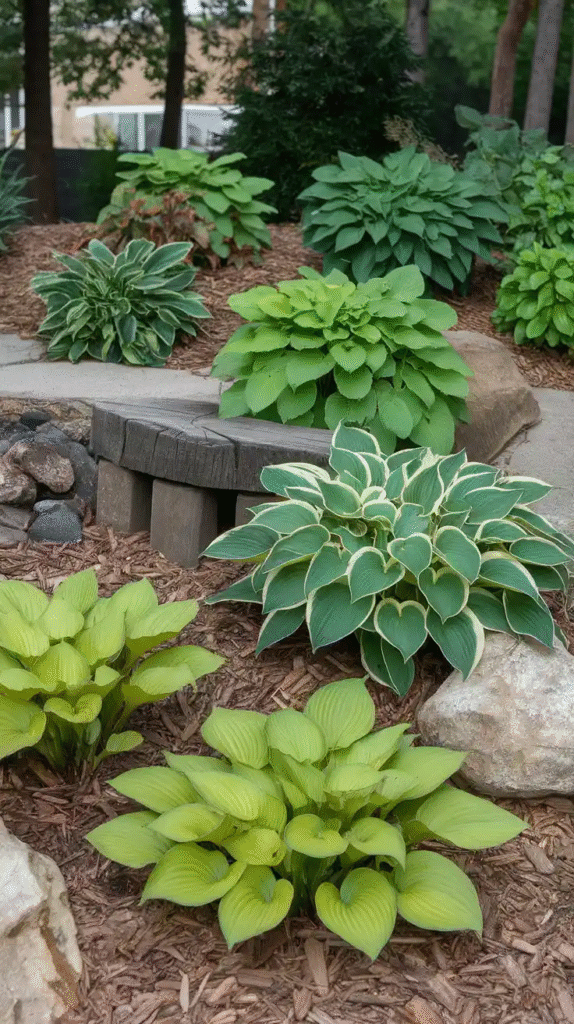
Nothing says lush quite like a mass planting of hostas. Filling an entire bed or slope with a single variety or a mix creates a dense, uniform carpet of green that looks polished and intentional.
Mass plantings are excellent for erosion control on hillsides or for filling large shady areas where other plants struggle. It’s also easier to maintain since you’re dealing with one or two types instead of a complex mix.
10. Integrate Hosta with Water Features for a Serene Setting
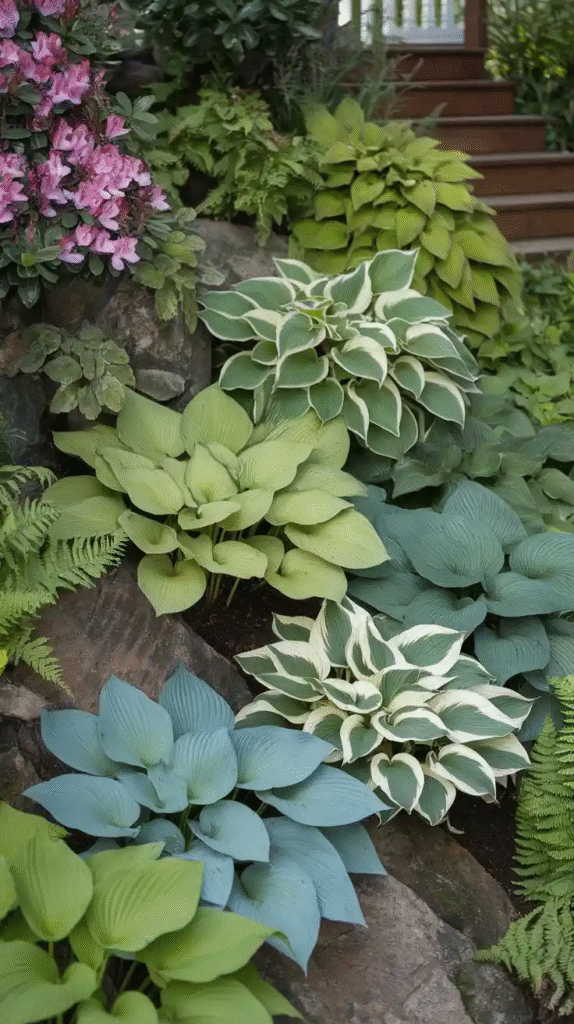
Hostas love moisture, so planting them near ponds, streams, or fountains creates a natural, tranquil look. Their broad leaves reflect beautifully on the water’s surface, enhancing the calming effect.
When landscaping around a water feature, include moisture-loving companions like astilbes or ligularias alongside hostas to build layers of texture and color. I once designed a backyard pond surrounded by ‘Halcyon’ and ‘Krossa Regal’ hostas — the combination was both elegant and soothing.
11. Use Hosta to Soften Hardscaping Elements
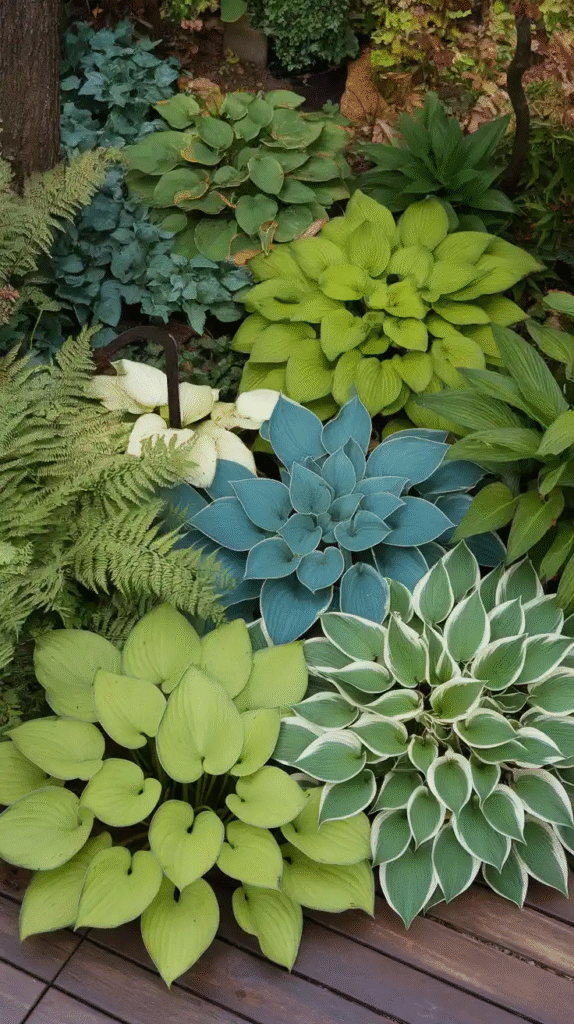
If your garden has stone walls, retaining walls, or paved patios, hostas are great at softening those hard edges. Their flowing leaves cascade over walls or spill from containers, bringing a natural, organic touch.
Trailing varieties or those with arching leaves like ‘Elegans’ work particularly well for this. Softening harsh lines creates a more inviting space and reduces the stark contrast between man-made and natural elements.
12. Combine Hosta with Shade-Tolerant Perennials
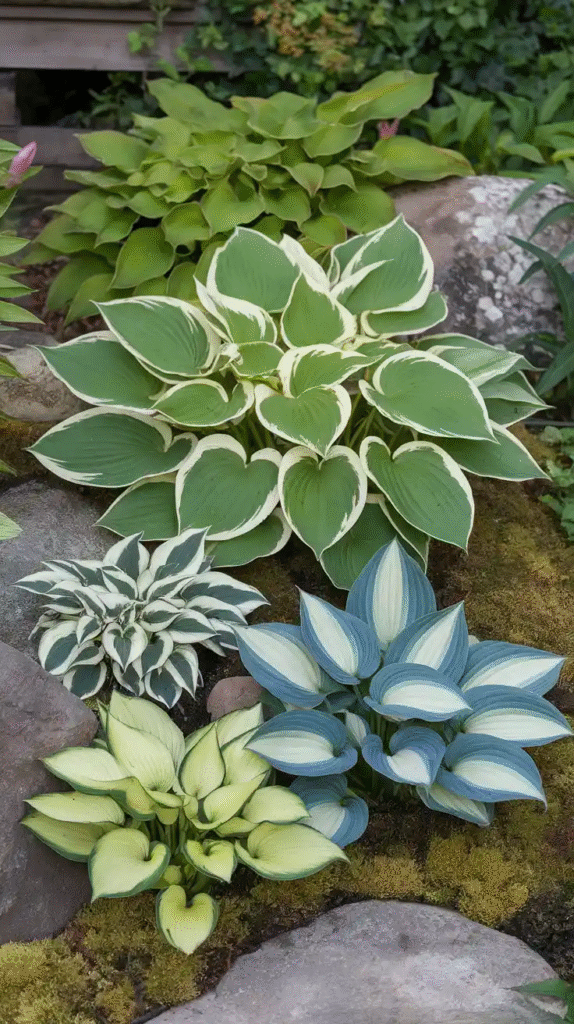
Pairing hostas with other shade-tolerant perennials such as astilbes, heucheras, and bleeding hearts adds variety and seasonal blooms to your garden. These plants complement hostas by adding pops of color and differing leaf shapes.
Creating these mixed beds makes your garden more dynamic and interesting throughout the seasons, especially when hostas are still emerging or going dormant.
13. Use Hosta to Frame Garden Structures

Hostas work beautifully as a framing plant around garden structures like arbors, gazebos, or garden benches. Their lush foliage provides a soft backdrop and blends the structure into the natural environment.
For example, planting hostas around a wooden gazebo creates a seamless transition from the man-made to the organic, making the space feel more integrated and cozy.
14. Grow Hosta in Rock Gardens for Contrast
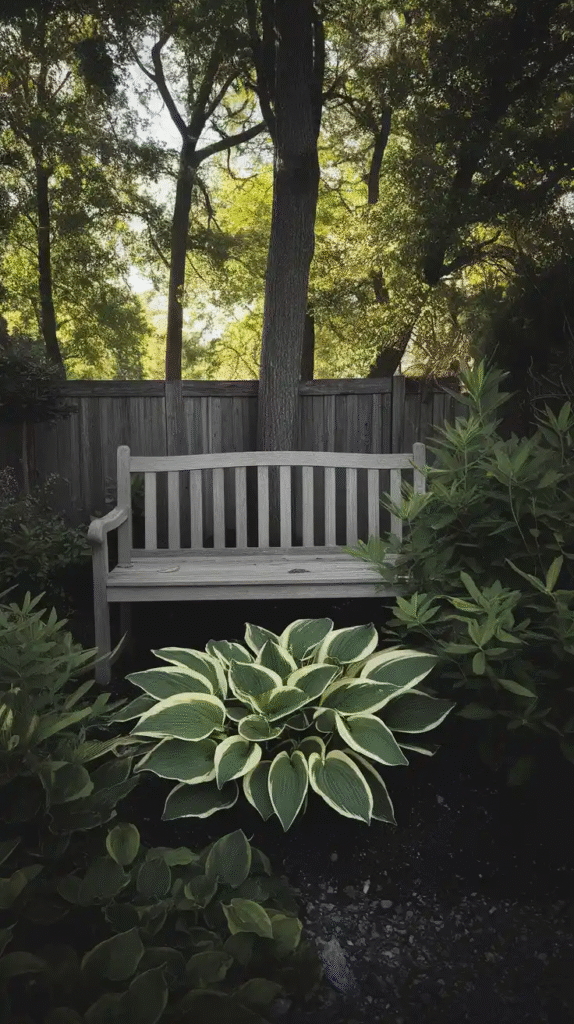
While hostas prefer moist soil, they can also add striking contrast to rock gardens, especially in shaded spots. Their large, soft leaves offset the rough, hard textures of stone beautifully.
Plant hostas in pockets of soil between rocks, and pair with small ferns or mosses to evoke a cool, alpine forest feel. This juxtaposition is like a gentle handshake between hard and soft elements in your landscape.
15. Use Hosta to Highlight Path Edges with Colorful Varieties
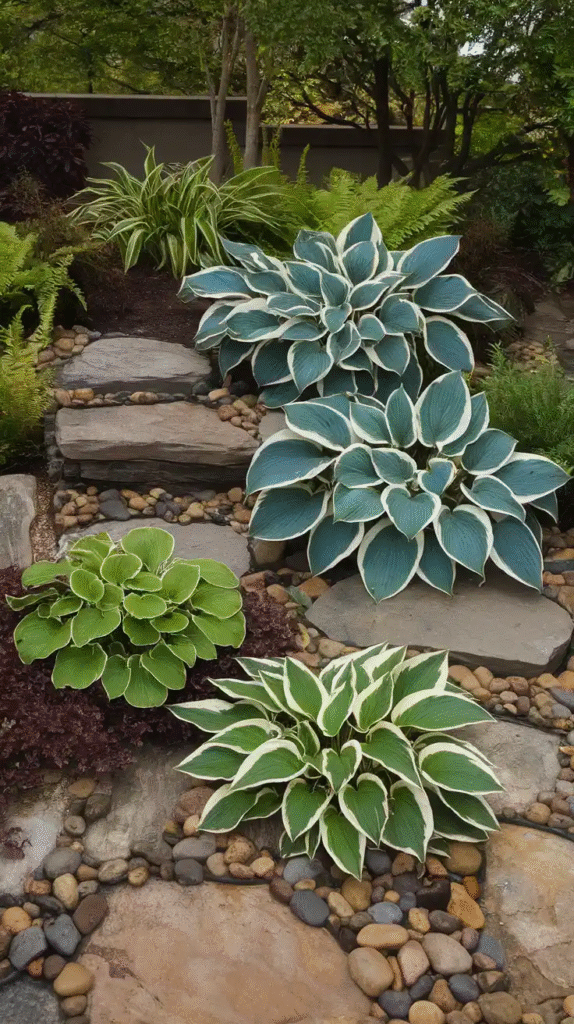
For a burst of color along your garden paths, choose brightly colored or variegated hostas to highlight path edges. Their eye-catching foliage acts like a natural border that guides visitors.
Varieties with chartreuse or yellow leaves brighten the way and add cheer even on gloomy days. This method is practical and visually appealing, combining function and beauty.
16. Incorporate Hosta into Raised Beds for Better Soil Control
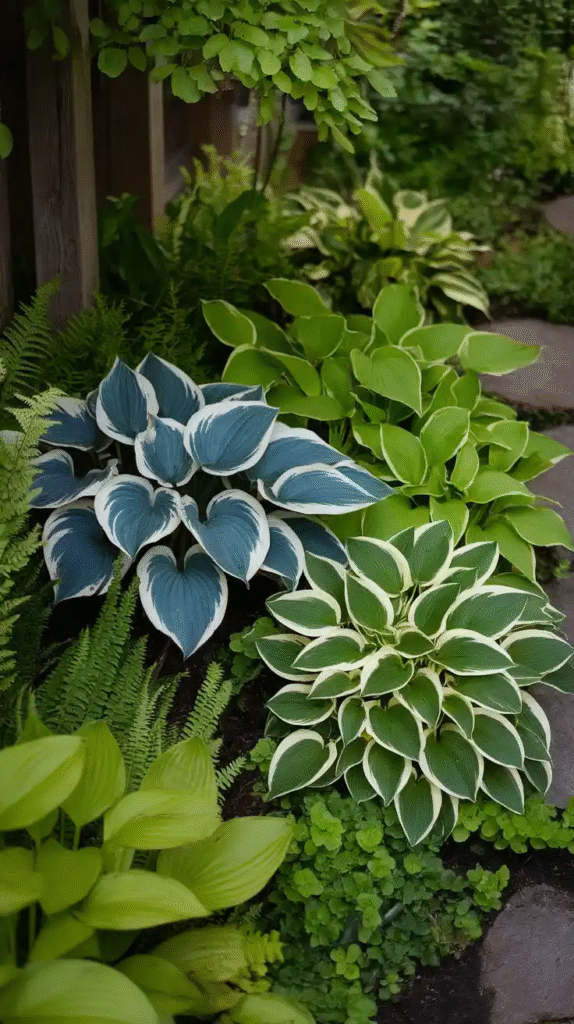
Raised beds give you the advantage of controlling soil quality and drainage. Hostas planted in raised beds benefit from well-drained, nutrient-rich soil that encourages vigorous growth.
This setup is ideal if your native soil is heavy clay or too sandy. Plus, raised beds keep your hostas at eye level, making them perfect for garden enjoyment and maintenance.
17. Use Hosta to Create a Natural Privacy Screen
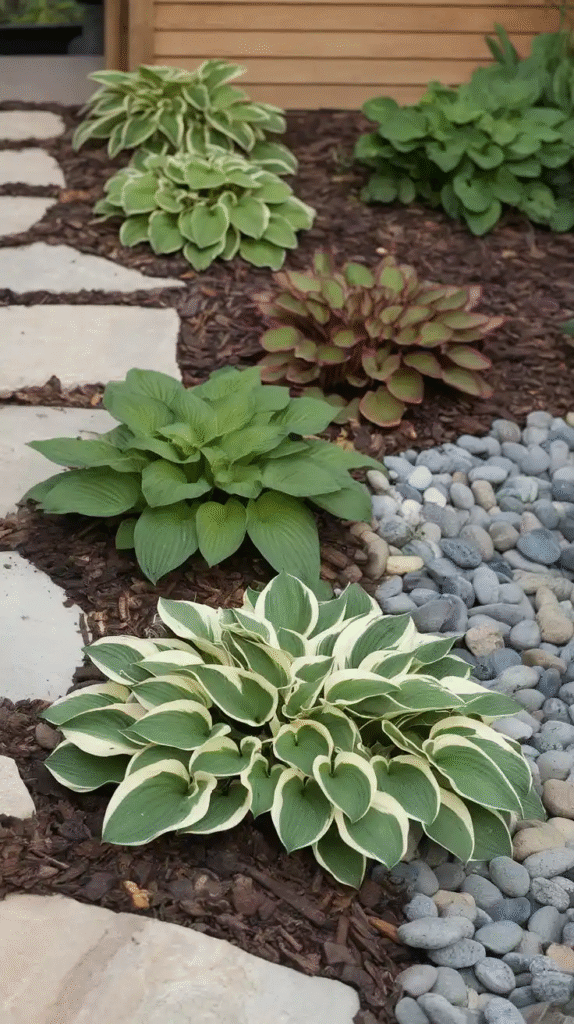
When planted densely and mixed with taller shrubs, hostas can help form a natural privacy screen in your yard. Their large leaves obscure views and add lush greenery, softening fences or property lines.
This is a cost-effective and attractive alternative to installing artificial barriers, giving your garden a peaceful, secluded feel.
18. Protect Hosta from Pests with Companion Planting
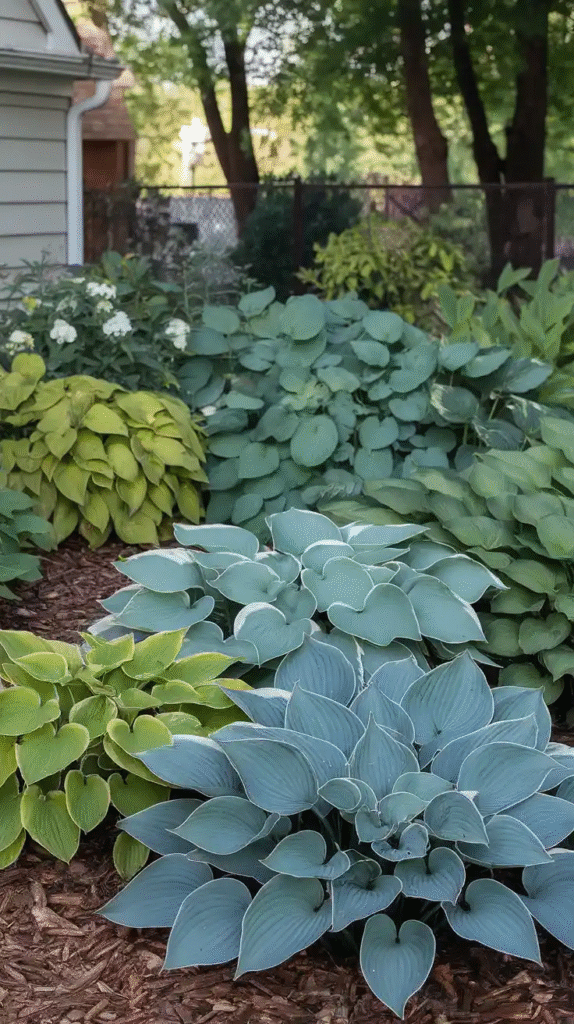
Slugs and deer love hostas as much as gardeners do, so companion planting is key to protecting your investment. Plants like garlic, chives, and ferns can deter pests when planted near hostas.
Using natural repellents keeps your garden eco-friendly and reduces reliance on chemicals. I always recommend keeping an eye out early in the season and using organic slug bait or beer traps if necessary to protect your leafy beauties.
Conclusion
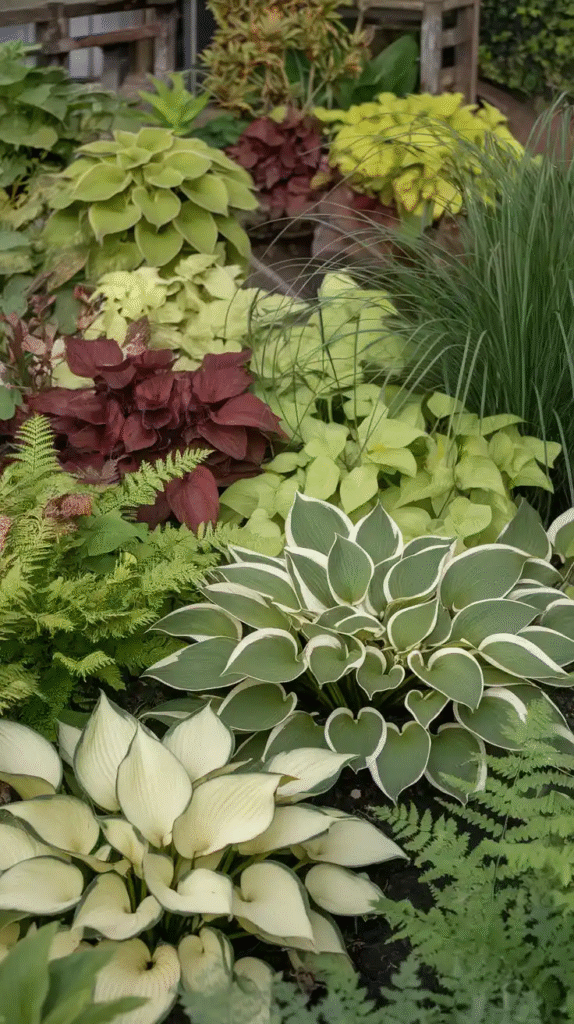
Hostas aren’t just plants — they’re the silent architects of shade gardens, turning shadowy, overlooked spaces into lush, living works of art. With their diverse varieties and easy-going nature, they offer endless possibilities to gardeners of all levels.
Whether you’re filling in under trees, framing a pathway, or creating a vibrant border, hostas add texture, color, and life without demanding the sun’s spotlight.
Remember, the key to success is matching the right hosta varieties with your garden’s light and moisture conditions, mixing and matching for visual interest, and keeping an eye out for pesky critters. With a little planning and care, your hosta-filled landscape will be a peaceful sanctuary that grows more beautiful every year.

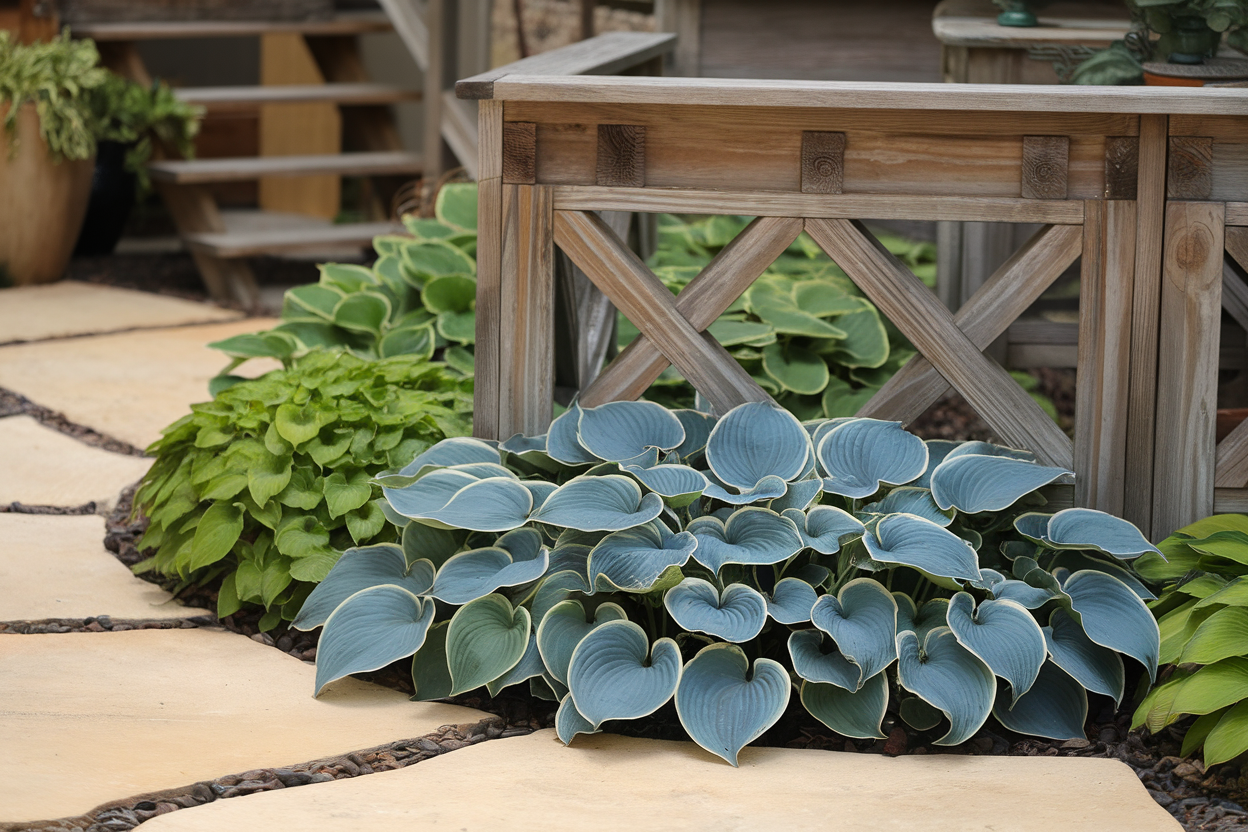
Leave a Reply